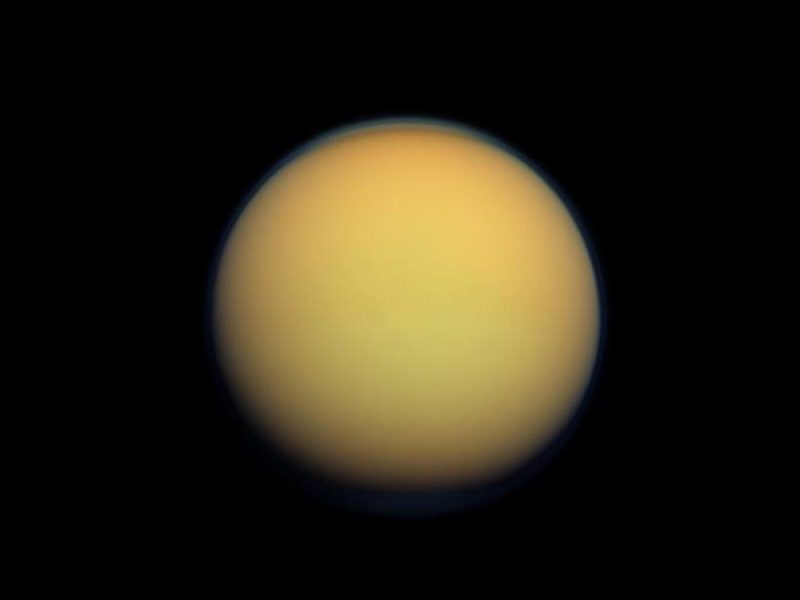
We don’t talk about Titan all that much around here, but all that is going to change in the next few years. NASA has chosen the Dragonfly as the next New Frontiers mission, and the little rotorcraft is currently expected to launch in 2027. Which seems like a long time from now, and definitely feels like a long time since the end of the Cassini mission in 2017. I’m still sad about the end of Cassini. I won’t lie. But that mission is still the gift that keeps on giving.
A team of scientists, led by Rajani Dhingra, continues to analyze Cassini data with regards to Titan. And they’ve published a new paper in Geophysical Research Letters that provides more evidence for rainfall on Titan.
That’s right. Rainfall. You see, Titan may be a moon of Saturn, but it’s also the most Earth-like body in the solar system that isn’t actually Earth. It has a mostly nitrogen atmosphere; there are clouds, seas, rivers, lakes, and even rain. Now, the lakes are made of hydrocarbons like methane and ethane instead of water, and the surface pressure is about fifty percent higher than Earth’s, but still. Those lakes and seas might harbor life. It would be life that uses different chemistry from most life here on Earth, though.
Hence the continuing interest in Titan. And back in 2019, this research group published a paper, also in Geophysical Research Letters, that outlined the observational evidence for rainfall at the north pole of Titan. Due to its axial tilt, Titan also has four seasons, which last about 7.5 years each, and these observations were conducted by Cassini during Titan’s summer. Now, Cassini had already observed precipitation at the south pole of the moon, but surprisingly, not in the northern hemisphere where the majority of lakes and seas are located.
So this team finds a bright ephemeral feature (BEF) that appears to be the result of sunlight reflecting off a puddle, like sunlight would off of wet pavement here on Earth. The rainfall that caused this potential puddle should also have affected the temperature, but the event was so short-lived that Cassini’s observations weren’t precise enough to detect any change.

The new study, however, details another bright ephemeral feature that came from the next pass of Cassini later the same year, and that detection was solid enough to resolve a temperature drop of 1.2 Kelvin around the BEF compared to the area surrounding it. By the next flyby, the BEF was gone. Dhingra sums up the research: We were fortunate enough to have that number of spectra to see a perceptible temperature difference in a single flyby in a single day on Titan, so we have for the first time probably looked at the weather on Titan. We don’t know the fate of the rainfall.
Roger Clark, a senior scientist at the Planetary Science Institute who was not involved in the research, notes that “a wet surface, ice, or even clouds can all cause the kind of spectral reflections that have been detected on Titan.” So while this research seems solid, we won’t know for certain until Dragonfly gets to Titan in 2035 and can make its own observations.
As always, we’ll keep you up to date with all the Dragonfly mission news and science as it happens.
More Information
Eos article
“Observational Evidence for Summer Rainfall at Titan’s North Pole,” Rajani D. Dhingra et al., 2019 January 16, Geophysical Research Letters
“Lower surface temperature at Bright Ephemeral Feature site on Titan’s north pole,” Rajani D. Dhingra et al., 2021 February 6, Geophysical Research Letters




 Join the Crew!
Join the Crew!
 Escape Velocity Space News
Escape Velocity Space News
0 Comments